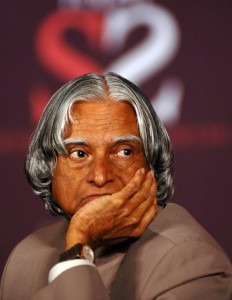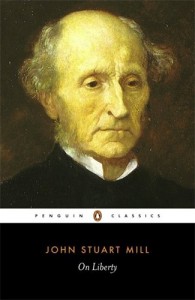5 books of A P J Abdul Kalam that will continue to ignite minds
India’s Former President Dr APJ Abdul Kalam passed away succumbing to a heart attack while giving a lecture at IIM Shillong. Books he wrote were best sellers and a must read for every citizen of India. (Courtsey : India Today)
From a boy who belonged to a not-so-rich background to the President of the whole nation, Dr APJ Abdul Kalam has left an indelible image on everyone’s mind and heart. Not just the man behind the technological innovations that upsurged our nation, Kalam penned books that always had a message for our countrymen and addressed each and every burning issue faced by India. Here are five of his books, which should be read by every citizen of our nation:
Wings of Fire
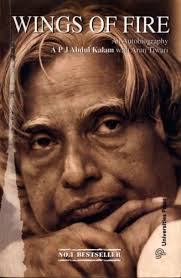 One of the things that stand out throughout the book is Kalam’s optimism. This autobiography narrates his story, his incredible journey, from the boy from a humble background who went on to become a chief scientist behind innovations in Indian space research and Indian missile programs, and who later became the president of India. Through Wings of Fire, we also get to know more about many other brilliant people who worked behind Indian space research such as Dr Vikram Sarabhai and Dr Brahm Prakash.
One of the things that stand out throughout the book is Kalam’s optimism. This autobiography narrates his story, his incredible journey, from the boy from a humble background who went on to become a chief scientist behind innovations in Indian space research and Indian missile programs, and who later became the president of India. Through Wings of Fire, we also get to know more about many other brilliant people who worked behind Indian space research such as Dr Vikram Sarabhai and Dr Brahm Prakash.
Ignited Minds
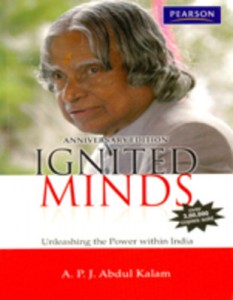 Ignited Minds was written in 2002. It talks about Dr Kalam’s experience of meeting students from all over the country. It shows how during the interaction with the people from the entire country, he realised the potential of India to be a developed nation. The book ends with a discussion between the two kids in a mother’s womb named ‘ego’ and ‘spirit’, which gives a message that we should look beyond what our eyes can see.
Ignited Minds was written in 2002. It talks about Dr Kalam’s experience of meeting students from all over the country. It shows how during the interaction with the people from the entire country, he realised the potential of India to be a developed nation. The book ends with a discussion between the two kids in a mother’s womb named ‘ego’ and ‘spirit’, which gives a message that we should look beyond what our eyes can see.
Indomitable Spirit
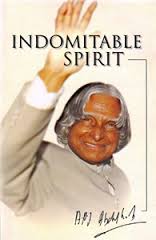 Indomitable Spirit brings together the values, thoughts and ideals of our Former President Kalam. In this book Dr Kalam has showed great respect towards women and said that, “Womanhood is a beautiful creation of God”. Indomitable Spirit gives us a detailed picture of his journey from the shores of Rameswaram to the Rashtrapati Bhawan.
Indomitable Spirit brings together the values, thoughts and ideals of our Former President Kalam. In this book Dr Kalam has showed great respect towards women and said that, “Womanhood is a beautiful creation of God”. Indomitable Spirit gives us a detailed picture of his journey from the shores of Rameswaram to the Rashtrapati Bhawan.
India 2020
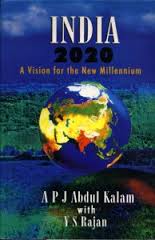 India 2020 is a thought provoking book. Kalam envisions India to attain the status of the fourth developed nation of the world by 2020. In this book, through various statistical proofs, Kalam proves that ‘Vision 2020′ is certainly not unattainable. He also illustrates this by giving several examples like the success of the Green Revolution and the development of space technology.
India 2020 is a thought provoking book. Kalam envisions India to attain the status of the fourth developed nation of the world by 2020. In this book, through various statistical proofs, Kalam proves that ‘Vision 2020′ is certainly not unattainable. He also illustrates this by giving several examples like the success of the Green Revolution and the development of space technology.
Turning Points
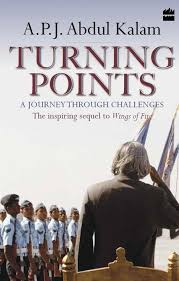 Turning Points is a sequel to Wings of Fire, which dealt with his life up to 1992. This book shows his journey as a President and what happened during his presidency. The book is more like a blueprint of Vision 2020. In this book, he stressed on the fact that India must embrace technology in order to move forward. He has also explained how with the use of e-governance, many modern day problems in India can be solved.
Turning Points is a sequel to Wings of Fire, which dealt with his life up to 1992. This book shows his journey as a President and what happened during his presidency. The book is more like a blueprint of Vision 2020. In this book, he stressed on the fact that India must embrace technology in order to move forward. He has also explained how with the use of e-governance, many modern day problems in India can be solved.
Listen to Dr A P J Abdul Kalam
https://www.youtube.com/watch?t=10&v=Mki0zBB6VeE
Dr. A. P J. Abdul Kalam was fond of writing songs and poetry and he wrote a lot of books in his career:
Developments in Fluid Mechanics and Space Technology, 1988: Dr. A. P. J. Abdul Kalam wrote the book along with Roddam Narasimha
India 2020: A vision for the New Millennium, 1998: Dr. A. P. J. Abdul Kalam wrote the book along with Y S Rajan
Envisioning an Empowered Nation: Dr. A. P. J. Abdul Kalam wrote the book along with A Sivathanu Pillai
You Are Born To Blossom: Take My Journey Beyond, 2011: He wrote the book along with Arum Tiwari
Target 3 Billion, 2011: The book was written along with Srijan Pal Singh
A Manifesto for Change: A Sequel to India 2020: Dr. A.P.J Abdul Kalam wrote the book along with V Ponraj
Reignited: Scientific Pathways to a Brighter Future, 2015: He wrote the book along with Srijan Pal Singh
Transcendence My Spiritual Experiences with Pramukh Swamiji, 2015
My Journey: Transforming Dreams into Actions, 2013
The Luminous Sparks, 2004
Mission India, 2005
Inspiring Thoughts, 2007
Forge your Future: Candid, Forthright, Inspiring, 2014
Turning Points: A journey through challenges, 2012
(Courtsey : India Today)
On Liberty
by
‘Over himself, over his own body and mind, the individual is sovereign.’ To this ‘one very simple principle’ the whole of Mill’s essay On Liberty is dedicated. While many of his immediate predecessors and contemporaries, from Adam Smith to Godwin and Thoreau, had celebrated liberty, it was Mill who organized the idea into a philosophy, and put it into the form in which it is generally known today.
The editor of this essay, Gertrude Himmelfarb records responses to Mill’s books and comments on his fear of ‘the tyranny of the majority’. Dr Himmelfarb concludes that the same inconsistencies which underlie On Liberty continue to complicate the moral and political stance of liberals today.
[Top]Harper’s illustrated biochemistry – 29th ed.
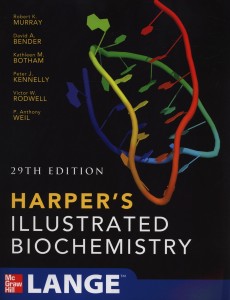 Harpers Illustrated Biochemistry 29th Edition
Harpers Illustrated Biochemistry 29th Edition
by
Clear, concise, and in full color, Harper’s Illustrated Biochemistry is unrivaled in its ability to clarify the link between biochemistry and the molecular basis of disease. Combining outstanding full-color illustrations with integrated coverage of biochemical diseases and clinical information, Harper’s offers an organization and careful balance of detail and brevity not found in any other text on the subject.
Following two introductory chapters, the text is divided into six main sections:
Section I addresses the structures and functions of proteins and enzymes.
Section II explains how various cellular reactions utilize or release energy and traces the pathways by which carbohydrates and lipids are synthesized and degraded.
Section III covers the amino acids, their metabolic fates, certain features of protein catabolism, and the biochemistry of the porphyrins and bile pigments.
Section IV describes the structure and function of nucleotides and nucleic acids, DNA replication and repair, RNA synthesis and modification, protein synthesis, the principles of recombinant DNA technology, and new understanding of how gene expression is regulated.Section V deals with aspects of extracellular and intracellular communication.
Section VI includes fifteen special topics, ranging from nutrition, digestion and absorption to the biochemistry of aging.
New to this edition:
- New chapters on Aging, Cancer, and Clinical Chemistry
- Every chapter has been updated to reflect the latest advances in knowledge and technology
- Each chapter now begins with a statement of objectives, followed by a brief discussion of the biomedical importance of topics discussed within the chapter
- 250 multiple-choice questions to test your knowledge and comprehension
- Increased number of tables that encapsulate important information, such as vitamin and mineral requirements
[Top]
Literature and the Human: Criticism, Theory, Practice
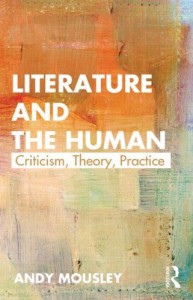 Literature and the Human: Criticism, Theory, Practice
Literature and the Human: Criticism, Theory, Practice
by
Why does literature matter? What is its human value? Historical approaches to literature have for several decades prevailed over the idea that literary works can deepen our understanding of fundamental questions of existence. This book re-affirms literature’s existential value by developing a new critical vocabulary for thinking about literature’s human meaningfulness. It puts this vocabulary into practice through close reading of a wide range of texts, from The Second Wakefield Shepherds’ Play to Mohsin Hamid’s The Reluctant Fundamentalist. Individual chapters discuss:
- Literature’s engagement of the emotions
- Literature’s humanisation of history
- Literature’s treatment of universals and particulars
- The depth of reflection provoked by literary works
- Literature as a special kind of seeing and framing
The question at the heart of the volume, of why literature matters, makes this book relevant to all students and professors of literature.
[Top]New Marathi books added to library
| Title | Author | Call Number |
| Swargiya theva aani apan sare bhau | Guruji, Sane | 891.463 GUR/Swa |
| Tanchai | Bavaskar, Uttam | 891.4631 BAU/Tan |
| Moplyanche band arthat mala kay tyache? | Savarkar, Vinayak D. | 891.4631 SAV/Mop |
| Muktamala | Halbe, Laxman M. | 891.463 HAL/Muk |
| Lokkavi Sant Tukaram | Patil, Tanaji R. | 891.46109 PAT/Lok |
| Pankhawarchi oal | Koparde, Pramod M. | 891.464 KOP/Pan |
| Premchand | Rai, Amrut | 891.433092 RAI/Pre |
| Stand | More, Mahadev | 891.463 MOR/Sta |
| Lokkahani janabaichi | Bhalerao, Indrajit | 891.461092 BHA/Lok |
| Lihitya lekhakache wachan | Sarang, Vilas | 891.4609 SAR/Lih |
| Agresar | Padhey, Bhau | 891.463 PAD/Agr |
| Afava khari tharavi mhanun | Pawar, Pragya | 891.4631 PAW/Afa |
| Kavivarya moropant krit shlok-kekavli | Kauthekar, Balkrishna | 891.461092 KAU-PAT |
| Trimiti | Shobhane, Ravindra | 891.4609 SHO/Tri |
| Mati ani manthan | Chandanshiv, Bhaskar | 891.4609 CHA/Mat |
| Gramin bolicha shabdakosh | Bhosle, D.T. | M 491.46 BHO/Gra |
| Dalit natak ani Datta Bhagat yanche natyavishwa | Shirsat, Shivdas | 891.46209 SHI/Dal |
| Shodhyatra rangbhoomeechee | Shinde, Vishwanath | M 792.0954 SHI/Sho |
| Veda aadhi tu hotas | Bagul, Baburao | 891.461 BAG/Ved |
| Kumkumachya palikade | Darade. Usha | 891.4631 DAR/Kum |
| Paanyaateel Paawale: sahityavichar va sahitik | Tadkodkar, S.M. | 891.4609 TAD/Pan |
| Vyavaharik marathi adhyapanachya disha | M 491.468 SHE/Vya | |
| Aajachi kadambari: nondi ani nirikshne | Pathare, Rangnath | 891.46309 PAT/Aaj |
| Amcha kay gunha? | Gavaskar, Renu | 891.4631 GAV/Amc |
| Navi Suruvat | Gadiya-Smith, Anita | 891.4631 GAD/Nav |
| Sahityapalviche rang aani roop | Mulate, Vasudev | 891.4609 MUL/Sah |
| Abhyaskoushalye: ek paul pudhe | Shinde, Vishwanath | M 370.954 SHI/Abh |
| Marathi vinodi katha: swarup aani aaklan | 891.463109 SAN/Mar | |
| Nirang jambhul | Jhondhale, Mahavir | 891.4631 JHO/Nir |
| Tulnatmak Sahitya ani Vishvakutumbachi Ghadan | Raut, Anant | 891.4609 RAU/Tul |
| Aga Aga Mhashi | Bhosale, D. T. | 891.4631 BHO/Aga |
| Solapuri sahitya parampara | Ingole, Krushna | 891.4609 ING/sol |
| Sarth Shrimadbhagwadgeeta | Athale, K.N. | M 294.5924 ATH/Sar |
| Bus number bara | Phadke, N.S. | 891.463 PHA/Bus |
[Top]

